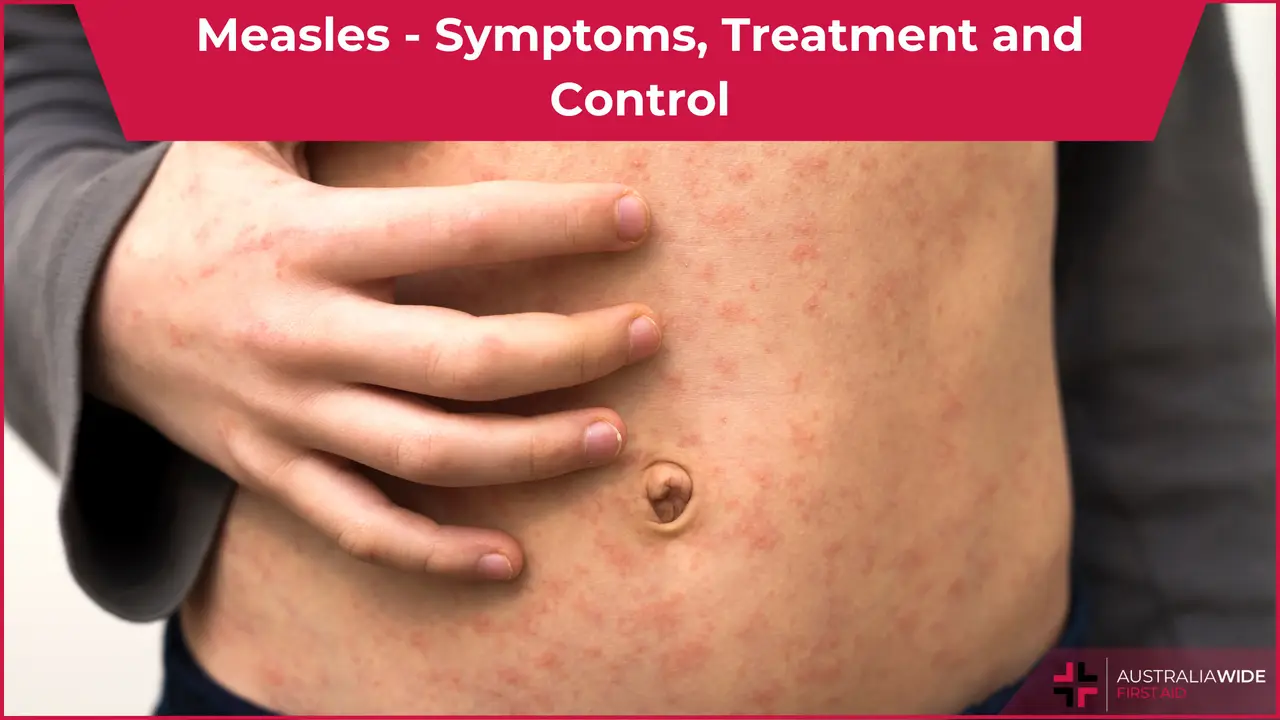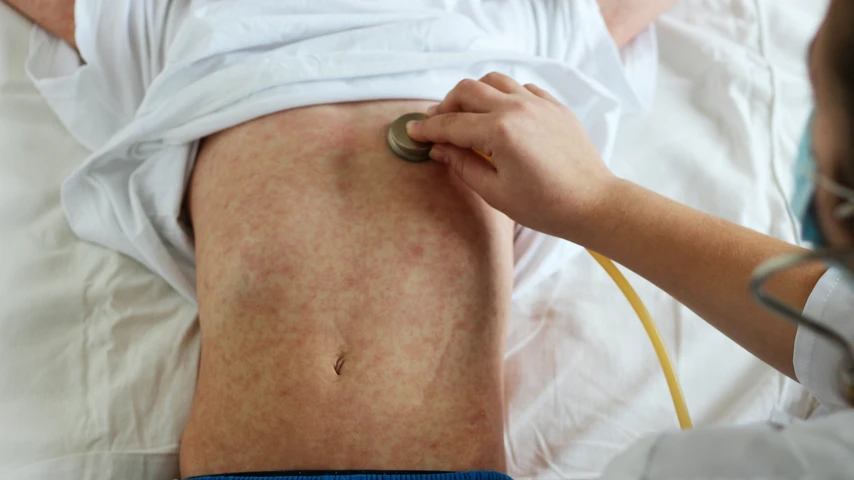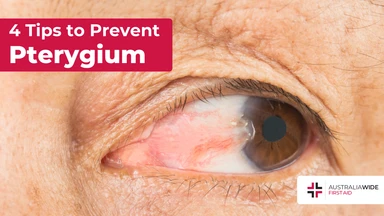Measles – Symptoms, Treatment and Control


Measles is an acute, highly contagious illness caused by the measles virus. Characterised by a rash and fever, it can lead to serious complication such as pneumonia (lung infection) and encephalitis (inflammation to the brain).
Measles is caused by the measles virus (Measles morbillivirus). It is highly contagious, and more prevalent in children.
Humans are the natural hosts of the virus, with no known animal hosts. This means that we could effectively irradicate measles with continued vaccination.
Before Australia’s vaccine schedule included measles, there was a peak in measles notifications and hospitalisations in the mid-1990s. No cases were reports in Australia in 2021, and at the time of publishing in January 2024 we have two reported cases.
About 1 in 20 children with measles will develop pneumonia, and 1 in every 1000 will develop encephalitis.
Around 2 of every 1,000 children with measles will die.

Measles presents very much like a flu in the initial stages. Often it is not until the characteristic blotchy, red rash appears that a diagnosis is made.
The initial symptoms of measles include:
These symptoms usually begin about a week after exposure, and become more severe over three days.
The cough is usually worse at night. By the fourth or fifth day, small white spots on a red base in the mouth and inside of the cheek appear.
This is followed by a blotchy, dark red rash, which often beginning at the hair line and spreads over the entire body. The rash is accompanied with a extreme fever which.
Besides the flu-like symptoms, measles can lead to very serious complications including:
Those at the highest risk of complications include young children, pregnant people, and medically-vulnerable groups.
Measles is one of the most infectious of all communicable diseases.
The virus is spread through the air when an infected person coughs or sneezes, and can linger in the air for a few hours. It is also transmitted through direct contact with secretions from the nose or mouth.
A person is infectious for 5 days before the onset of the measles rash, and about 4 days after the rash appears.
Those at the highest risk of complications include young children, pregnant people, and medically-vulnerable groups.
Immunisation against measles is recommended as part of the National Immunisation Program Schedule.
The schedule includes the Measles Mumps Rubella (MMR) vaccine (free of charge) and is required by:
Adults that were born before 1966, and those who have not received two doses of the MMR vaccine, are also eligible for the free vaccine. Two doses of the vaccine are necessary to provide a high level of protection.
The only way to prevent measles is through vaccination.
Treatment is limited, as it is for all viruses. For mild cases, your doctor will likely suggest rest, fluids, and paracetamol for comfort.
Hospitalisation may occur in severe cases, those involving complications, and for people who are part of the vulnerable group.

People with Measles should be excluded from public spaces, work, school, and childcare centres for at least four days after the appearance of the rash.
Anyone who has been in contact with a person with measles and have not been vaccinated, or have any condition that compromises the immune system, should be excluded from work, school, or childcare for 14 days from the day the rash appeared on the person diagnosed with measles.
If an un-vaccinated person receives the MMR vaccine within 72 hours of their first contact with the original person with measles, they may return to work, school or childcare.
Measles is a notifiable illness, with medical staff required to notify their sate department of health. As such, it is something that we should all take very seriously.
Signs and symptoms start very similar to colds and flus, so if you suspect that measles may be the cause you should seek medical advice immediately.
If you have any concerns, or know of someone displaying the signs and symptoms of measles, please contact your closest medical centre and/or staff.

May 1, 2025
Pterygium, also known as surfer's eye, is an ocular surface disease characterised by a growth of limbal and conjunctival tissue over the cornea. Fortunately, you can practice many eye health habits to help prevent the development of pterygium and other risks.

April 3, 2025
Tuberculosis is a severe bacterial infection that mainly affects the lungs and other parts of the body, including the nervous system. This contagious disease can quickly spread in crowded areas when an infected person coughs, talks, or sneezes.

February 13, 2025
Melioidosis is a bacterial infection caused by Burkholderia pseudomallei, a microorganism found in soil and water. This infection is often underdiagnosed due to symptoms mimicking many other illnesses. As such, awareness is critical for those living or working in affected regions.